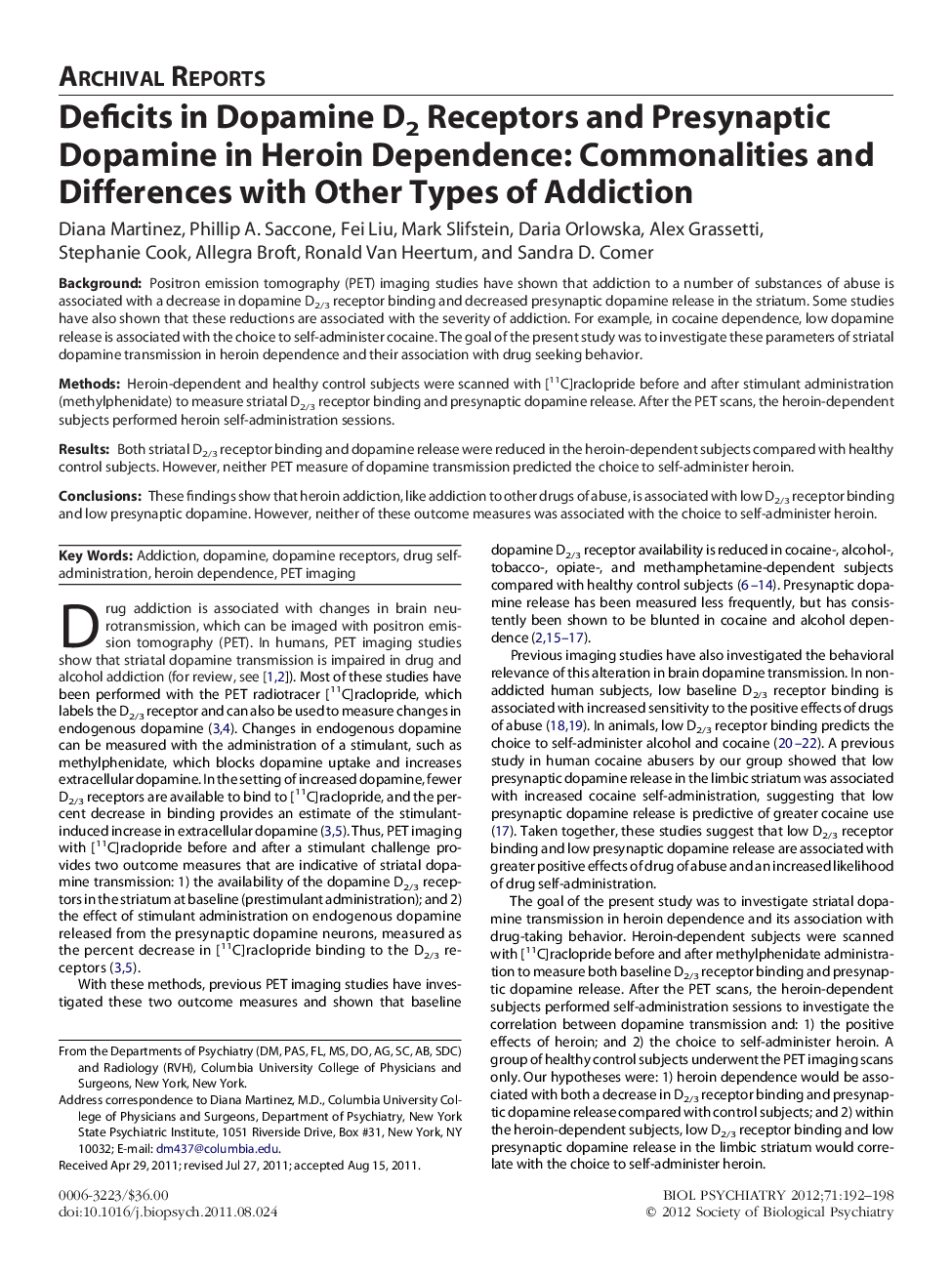| Article ID | Journal | Published Year | Pages | File Type |
|---|---|---|---|---|
| 4178209 | Biological Psychiatry | 2012 | 7 Pages |
BackgroundPositron emission tomography (PET) imaging studies have shown that addiction to a number of substances of abuse is associated with a decrease in dopamine D2/3 receptor binding and decreased presynaptic dopamine release in the striatum. Some studies have also shown that these reductions are associated with the severity of addiction. For example, in cocaine dependence, low dopamine release is associated with the choice to self-administer cocaine. The goal of the present study was to investigate these parameters of striatal dopamine transmission in heroin dependence and their association with drug seeking behavior.MethodsHeroin-dependent and healthy control subjects were scanned with [11C]raclopride before and after stimulant administration (methylphenidate) to measure striatal D2/3 receptor binding and presynaptic dopamine release. After the PET scans, the heroin-dependent subjects performed heroin self-administration sessions.ResultsBoth striatal D2/3 receptor binding and dopamine release were reduced in the heroin-dependent subjects compared with healthy control subjects. However, neither PET measure of dopamine transmission predicted the choice to self-administer heroin.ConclusionsThese findings show that heroin addiction, like addiction to other drugs of abuse, is associated with low D2/3 receptor binding and low presynaptic dopamine. However, neither of these outcome measures was associated with the choice to self-administer heroin.
